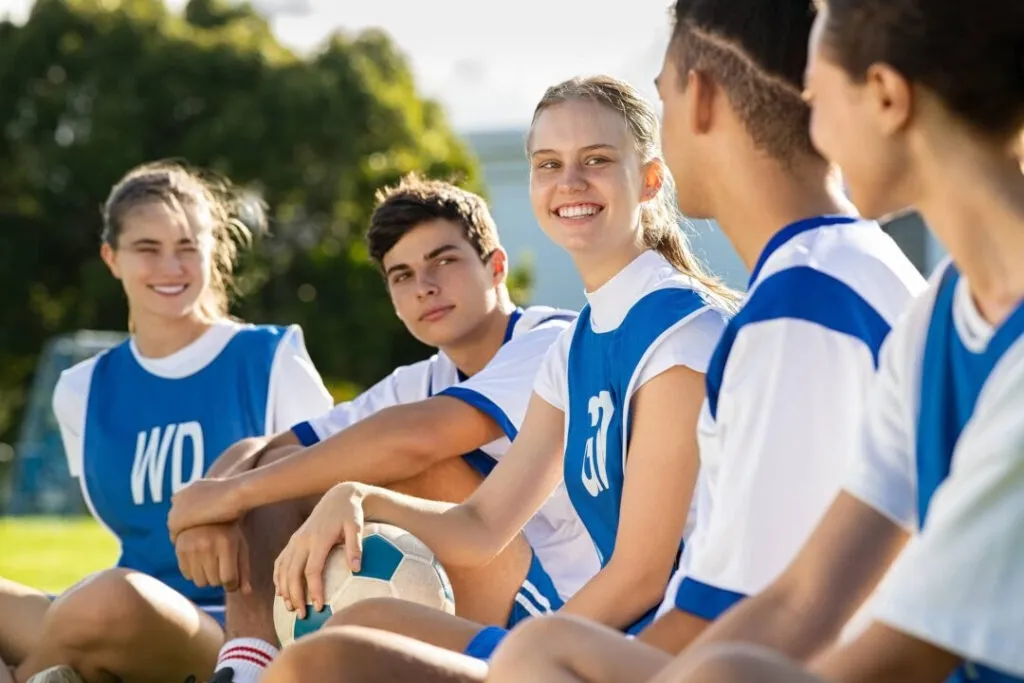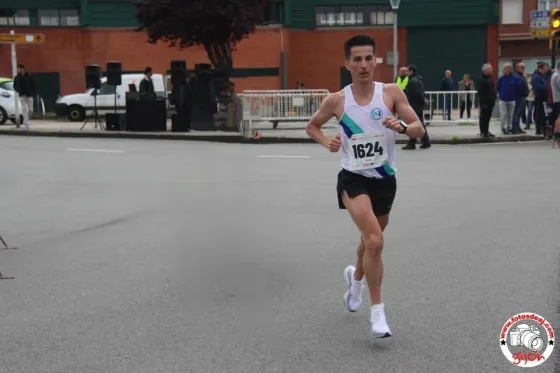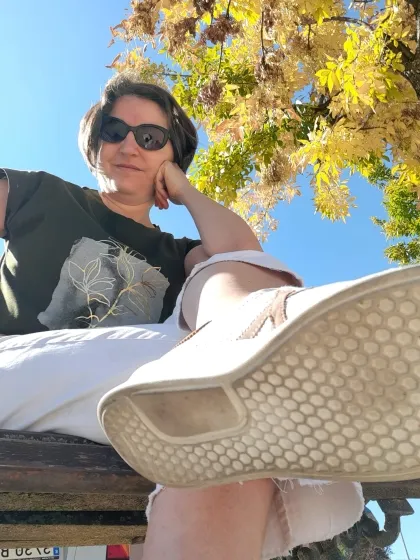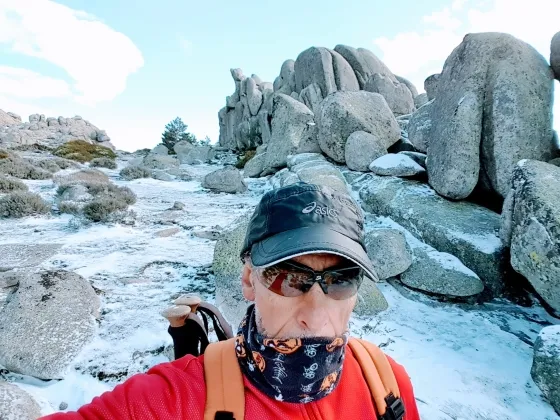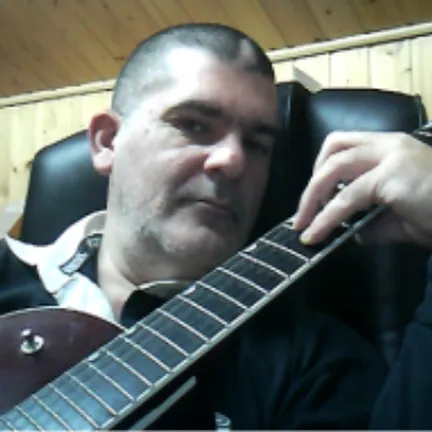Hello good!
Anyone who is of type 1, and who does sports could advise me as he does?
As soon as I do any sport, the levels lowers me a lot, so before I have to watchy sweets, honey, fruits, etc. And when I have been going down a long time.
Thank you!
No signature configured, add it on your user's profile.
@antonimar, how slow do you use?Could you have excess slow?
With low sport, but so much ...
Hija de 35 años , diabética desde los 5. Glico: normalmente de 6 , pero 6,7 la última ( 6,2 marcaba el Free)
Fiasp: 4- 4- 3 Toujeo: 20
regina said:
@antonimar, how slow do you use?Could you have excess slow?
With low sport, but so much ...
The slow one is threeiba, you may be right, maybe it influences
No signature configured, add it on your user's profile.
antonimim said:
I understand that you are referring to aerobic exercises, therefore it is important to have no active rapid insulin.If you have it, blood glucose collapses.
If they are high intensity sports we should analyze it.
Db1 desde Diciembre 2007.
Fiasp y Tresiba.
FreeStyle Libre 2
As they comment here, try not to have a quick insulin with effect and try to be high before ... maybe watching sweets, fruits ... They all go up in the long term, you may need something that goes up quick type juices, glucose pills.It also depends on the time you do the sport ...
Over time it controls more.
No signature configured, add it on your user's profile.
I have been with diabetes for 31 years and I am 48 years old.
As sport I like road cycling always.
Today thanks to the sensor and several Garmin gadgets where I visualize glycemia and its variations
It is all much simpler to manage.
I tell you what I do.
The average is 80km or 150 km per routes depends on the time of the year.
With outputs in summer 3 times a week ..
I usually make an average of 7000 km a year
As you manage,
EASY.
First adjust the basal.
Before leaving with the bike I measure glycemia and try to keep it in rank no more than 130
I take two glasses of water, ske
Everything necessary: bars / gels / dextrose pills.
Everything can be managed.
The most important thing always carries the insulin + the necessary hydrates.
I usually go out with a group of people (with a normal body that the pancreas works and I have no problem with maintaining their socks on the contrary sometimes suffer with my step that the free freestyle sensor is considered by the UCI a technological doping device)
I tell you that before the same kilometers or more without a sensor
All sensations and eye
That is a disaster and can lead to confusion
Especially if you make routes with a temperature of 48 degrees here in the center South of Madrid.
Good luck and do not stop doing sports
No signature configured, add it on your user's profile.
nekgatodulce said:
I have been with diabetes and I am 48 years old.
As sport I like road cycling always.
Today thanks to the sensor and several Garmin gadgets where I visualize glycemia and its variations
It is all much simpler to manage.
I tell you what I do.
The average is 80km or 150 km per routes depends on the time of the year.
With outputs in summer 3 times a week ..
I usually make an average of 7000 km a year
As you manage,
EASY.
First adjust the basal.
Before leaving with the bike I measure glycemia and try to keep it in rank no more than 130
I take two glasses of water, ske
Everything necessary: bars / gels / dextrose pills.
Everything can be managed.
The most important thing always carries the insulin + the necessary hydrates.
I usually go out with a group of people (with a normal body that the pancreas works and I have no problem with maintaining their socks on the contrary sometimes suffer with my step that the free freestyle sensor is considered by the UCI a technological doping device)
I tell you that before the same kilometers or more without a sensor
All sensations and eye
That is a disaster and can lead to confusion
Especially if you make routes with a temperature of 48 degrees here in the center South of Madrid.
Good luck and do not stop doing sports
I love reading this type of opinions.I carry a bomb and sensor and many times I respect me to do sports in case it gives me a descent away from home.Once I had a fat scare doing sports on a rural road, it gave me considerable hypoglycemia and forgot the glucose in the car that was parked away from the site.Imagine the scare ...
Ole for you and continue like this
Varon de 28 años con diabetes tipo 1 desde 2015. Minimed 780G y Guardian 4 con Humalog
Hello, I exercise aerobic daily, if I do it in the morning, approximate 2h after breakfast, if at breakfast I put 3.5 or for a coffee with milk and a toast in full exercise I lower my glucisa and it forces meTo take sugar, but if I replace the toast with a tortiika or sausage for example, I put 2u or 1.5u and I have no decline durabte the exercise and thanks to the sensor and the alarms that I also see on the clock I am more contradicted.If I do it in the afternoon without any rapiida, it does not affect me innla glucose
No signature configured, add it on your user's profile.
Lrm82
05/03/2023 9:49 a.m.
antonimar said:
good!
Anyone who is of type 1, and who does sports could advise me as he does?
As soon as I do any sport, the levels lowers me a lot, so before I have to watchy sweets, honey, fruits, etc. And when I have been going down a long time.
Thank you!

Hi, I've been doing sports (MTB) for a short time and little by little I control something else.I have to go out with approximately 200-220 and when I go down to 160-170 I take some hydrates so that I do not get down more than 90-100, because then I notice that it costs a lot that I used to climb the sugar.For example, I take two bimbo toast 35 minutes before leaving and just before another sandwich to get up and that's how it has worked better so far.Endo told me that although it rises to 250-280 or even something else during exercise there is no problem.
What I do is also put myself in place of 8 that day that day put on 4-5 and nothing quick.
I hope it helps you, although each body is a world.
Much encouragement and luck 🍀
No signature configured, add it on your user's profile.
Do not exercise with active rapid insulin (because the liah) and carry in the backpack, in addition to water, a juice, glucose or candy brick, a piece of fruit, some nuts, come on, what becomes a buffet.Locate some of these things when you see that glycemia goes down.
There is no unique protocol, it depends on:
1. With what sugar level you enter the exercise
2. What exercise are you going to do, because the force elevates glucose and those of cardio or resistance lower it
3. When you see that you need rescue, you have to assess how much exercise time you have left to calculate how many HC you are going to take as a rescue and do not then give you hyperglycemia.
4. What time of the day is, whether or not you are close to a main meal.
It is based on trial and error.At first I overwhelmed me a lot because the exercise threw strongly from glucose down.Now I know my organism's reactions to different situations.
Last week one day I arrived at the gym (walking uphill and lightly) with 56 reading in the sensor, I took 200 ml of fruits, entered Bodypump class and finished the exercise with the glucose in range.Maybe I was a little donkey, but since I had gone there I was angry to lose my class.
Above all, do not stop exercising, it is worth it even if it produces you, you will already be more stable and handle the situation.
LADA desde septiembre de 2021
Toujeo y Fiasp
Aprendiendo
You have to study what best goes to each one.Walking is also a good exercise.
To my daughter half an hour of yoga before dinner is very good, at home online ..
Hija de 35 años , diabética desde los 5. Glico: normalmente de 6 , pero 6,7 la última ( 6,2 marcaba el Free)
Fiasp: 4- 4- 3 Toujeo: 20
Arse
05/07/2023 8:23 p.m.
nekgatodulce said:
I have been with diabetes and I am 48 years old.
As sport I like road cycling always.
Today thanks to the sensor and several Garmin gadgets where I visualize glycemia and its variations
It is all much simpler to manage.
I tell you what I do.
The average is 80km or 150 km per routes depends on the time of the year.
With outputs in summer 3 times a week ..
I usually make an average of 7000 km a year
As you manage,
EASY.
First adjust the basal.
Before leaving with the bike I measure glycemia and try to keep it in rank no more than 130
I take two glasses of water, ske
Everything necessary: bars / gels / dextrose pills.
Everything can be managed.
The most important thing always carries the insulin + the necessary hydrates.
I usually go out with a group of people (with a normal body that the pancreas works and I have no problem with maintaining their socks on the contrary sometimes suffer with my step that the free freestyle sensor is considered by the UCI a technological doping device)
I tell you that before the same kilometers or more without a sensor
All sensations and eye
That is a disaster and can lead to confusion
Especially if you make routes with a temperature of 48 degrees here in the center South of Madrid.
Good luck and do not stop doing sports
It seems that I would have become your double, hehehehe.More or less the same, but with some km.Annual more.But with the arrival of the heat my insulin needs, both three (slow) and Humalog (fast) are reduced by 2 or 3 units the first and 1 unit the second, approximately.When the cold comes, the opposite usually happens.
My outputs on the road bike are usually around 100 km.Interestingly, I have been uploading ports for two weeks every time I leave (navacerrada, predictions, morcuera, cane ...) and I have noticed something that had never happened to me since I debuted a few years ago .... glycemia lowered me to theHour about starting.I control and when I see that I arrive at 75 I directly put an overd sugar (8 gr) and in the second port another gel with approximately 17 gr.of carbohydrates.In addition to a small sandwiches with protéic bread to fill the stomach a bit.Ahhh and water.Nor do I give up a small bite of what the rest of the group ask (toast snack with oil) if we stop to have coffee.
The truth is that being able to see the data at the Garmin is a spectacular advance.Predicted up and down and you can make decisions that was impossible before.I never carry in my insulin outputs to prevent a hyper .... (When it comes to food, I usually be at home).They do not usually give me, except the other day in the ports of the Sierra Norte area.And do you know why it gave me?Because with the rush, the cats and other stories I forgot to put on the fast breakfast ..... the first time it happens to me.
As you will see, if you interest your diabetes and take control (as far as possible) it is very feasible to play sports.Well, feasible and recommended.You will find yourself much better with yourself and, probably, your exogenous insulin needs will go down.It also helps and a lot of low carbohydrates, of course.
Lada desde 2018. Freestyle Libre 2. Tresiva y Humalog J. Alimentación "low carb".
Serafín Murillo is an expert nutritionist in diabetes and talks a lot about sport.Look at this guide, in it there is a lot of information about what happens to glucose in a type 1 diabetic when it does sports and offers tools to manage it.
Link
LADA desde septiembre de 2021
Toujeo y Fiasp
Aprendiendo
Alerr
05/09/2023 11:44 a.m.
For me there is nothing like the tranquility that the Keto diet gives you and fasting in the practice of sport.
I know it is controversial, a lot, but I practice many sports, and knowing you gives you immense peace of mind.Regarding the guidelines of Serafin Murillo, they are phenomenon, but I think that obvious to which we do Low Carb or Keto, in addition to what I understand as an error, consider serious risk of ketoacidosis from 3 mmols/L when you do not have incount the glucose level or time ...
Finally, I can only say what happens to me, without active and fasting insulin (18-20h), with normal glucose levels (80-110mg/l), making mountain races or bicycle for more than 3 hours,The levels of ketones do not rise because you use them, the ketones are the fuel so they do not rise until they stop (I think this S. Murillo does not take it into account in its publication), to me what goes up to me is glucose,And the unfortunate does not go down until I stop.
I hope not to bother anyone, I know that this topic lifts blisters.
greetings
No signature configured, add it on your user's profile.
On the contrary, @Alerr.Your experience seems very interesting to me.I do not do ketogenic diet because it seems extradifical to maintain.I am satisfied with lowcarb that is more affordable.I also practice intermittent fasting but no more than 14 hours.I have hypothyroidism (subclinical moment) and I think it is not compatible with this.
But I am very interested how glycemia and sport handle from the ketogenic diet.Having ketones is not synonymous with ketoacidosis;The latter occurs if the body has no insulin and sugar is very high for a long time, it also seems to me to mix both concepts.
LADA desde septiembre de 2021
Toujeo y Fiasp
Aprendiendo
Hello
I am not type 1 but lada type but in principle it is not very different because it is also autoimmune although there are other responable antibodies.I make mountain cycling almost daily, an hour during the week and 4 or 5 on the weekend.
Short outputs are never a problem but in the lengths it is better to eat slow hydrates before leaving and reducing a bit both slow and fast insulin, and of course carrying both insulin and fast and slow hydrates, because every day is different.At least in my case it is practically unpredictable, I never know what will happen in advance and that is why I am prepared for whatever.
For example, last summer I made the same route of about 80 km along the mountain with about 1200 meters of positive slope accumulated two weeks apart, with the same breakfast, the same weight, the same bike, the same rhythm, the same sameInsulin, the same weather conditions, the same schedule and even the classmates, all the same.The first time I ate everything I carried and I still had to "borrow" some peaches along the way and I couldn't get from 70 glycemia all the way.On both occasions I left the house with 130 but the second did not try a bite because I was gradually climbing all the time and when I reached 300 I already punctured 4 you from Novorrapid and lowered the rhythm because it increases the risk of ketoacidosis.I got home a little high but already controlled.
The good thing is that I always carry the freestyle sensor and the continuous reader of Diabox on the mobile that consults from time to time and with that it is easy to react in time so that the thing does not happen to adults.
Greetings
(1968) Tipo LADA desde 2014
Also tell you that I have a specific calendar of insulin units plan based on winter stations further insulin and spring and summer less insulin due to cold change () more insulin) and heat (less insulin)
No signature configured, add it on your user's profile.
Hello, I exercise 3 times running 50 min.I go in the morning on an empty stomach if I have 100 or more not like anything and if I have less like a fruit and after running breakfast and I punctuate the same dose of ràpida and if as I measure I am low I take a fruit.
In the afternoon if I run that I almost never go to two or three hours to eat and look at it before and if I am less than 100 I take a fruit and at night I put a unit less than threeiva so that I do not give meA nocturnal hypo
No signature configured, add it on your user's profile.
